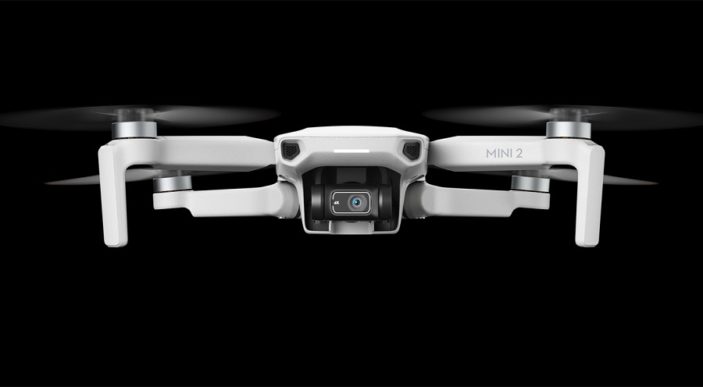
I don’t know how competing brands are going to catch up to DJI after this announcement. The leading civilian drone company has now put out the ultra-light Mini 2 ahead of the Christmas rush, effectively making drone piloting and the unique creation tool the sector brings much more accessible than ever before.
A sequel to DJI’s acclaimed Mavic Mini drone, the Mini 2 is now the brand’s flagship entry-level drone at a weight of less than 249g and a slim profile that makes it just as big as some smartphones on the market.
A number of refinements have been made to vastly improve upon the Mavic Mini, which follows DJI’s recent products with a slimmed down, to-the-point name change. In recent months we’ve seen the OM4 and Pocket 2 express DJI’s renewed focus as the innovative camera-tech team look to a very promising future.
The 4K DJI Mini 2 sounds like the perfect fit for first-time drone fliers and hobbyists who may be overwhelmed by more expensive models, with improved imaging capabilities, powerful flight performance, and significantly enhanced transmission technology through DJI’s OcySync 2.0, which boosts the range from 4km on the Mavic Mini to a whopping 10km.
“Mavic Mini was a monumental breakthrough for DJI and for drone pilots across the world, as its unprecedented combination of weight, safety, performance and overall value became the entry point for countless new drone pilots and fans,” explained DJI President, Roger Luo. “DJI Mini 2 enhances those key aspects, packing larger drone performance in an approachable, small design in the safest drone category that is perfect for beginners and will also impress more experienced pilots.”
DJI Mini 2 will sport a similar folding design to its predecessor, focusing on portability to make it the most travel-friendly drone on the market. The motors have been upgraded to provide up to 31 minutes of flight time along with faster acceleration and speed, and the ability to withstand winds up to 38km/h. High-grade positioning and vision sensors help the Mini 2 hover precisely in place and map out the ground below, while GPS keeps track of where the drone is and assist automated landing.
Other features contributing to safety include GEO fencing, which keeps drones out of sensitive areas like airports, a Return to Home command which brings the drone back to its pilot, and Altitude Lock which sets an adjustable limit on how high it can fly. That should easily put beginners in a position where they can gradually get used to flying a drone, taking away the often intimidating barrier that prevents people from buying into the tech in the first place. Notably, obstacle avoidance sensors seem to be the biggest omission, especially given they are key features of the more expensive (and larger) DJI drones.
Of course, none of this would mean much if the drone wasn’t equipped with a camera capable of creating great content. And for its size, the camera is sounding mighty impressive with a 1/2.3-inch sensor that’s able to record 12MP images and a max video resolution of 4K/30fps at 100Mbps. DJI has also designed the camera so that users can save images in JPEG as well as RAW, whereas the first iteration could only shoot the former.
A 3-axis gimbal will help keep capture shake-free and steady, designed to compensate for variables such as movement and wind.
If users are content with recording in 1080p, they’re able to get closer to their subject with a 2X loseless zoom, which can push up to 4X digitally.
And it wouldn’t be DJI without a number of pre-programmed intelligent modes to make capturing and editing excellent content much easier. Pre-set modes on the Mini 2 include “Dronie”, where the drone can fly backwards and upward while tracking a subject; “Helix”, with the drone flying upward and away to spiral around a subject; “Rocket”, moving the Mini 2 straight into the air with the camera pointed downward while following a subject; “Boomerang” with the drone flying in an oval-like path around the subject; a wide-angle mode that captures nine images and stitches them together; a “Sphere” mode with 26 images worked together; and more.
The DJI Fly app has been updated accordingly, able to download images from the drone at a speed rate of 20MB/s, after which users can edit in a number of ways and instantly share their creations.
As with all of their products, DJI are putting this up for retail both as a standalone purchase, and as an enhanced kit coming with a number of accessories like 360-degree propeller guards, a travel bag, three batteries, charging display case, a creative kit, and snap adapter. Alone, the DJI Mini 2 retails for $749 in Australia, while the combo-kit will set you back $949.
More information can be found here.
